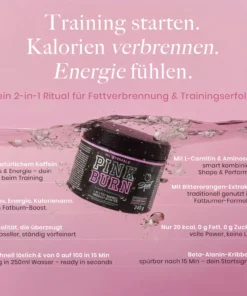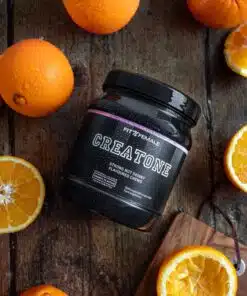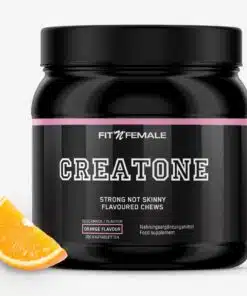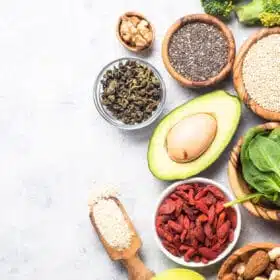When it comes to building a dream figure, the focus for most women is neither the stomach nor the chest, but the PoThis is quite understandable from an objective point of view. A well-toned butt makes you look better in jeans, in a dress, but also on the beach and consequently appear more confident. However, the bad news is that most women will never achieve the perfect apple butt, because they do not train the butt muscles at all or only insufficiently. To give you the chance to stand out from the crowd, we're busting 6 common butt training myths in this article.
Myth 1 - The buttocks must be trained exclusively with heavy weights
The basis for this myth is a study that examined the muscle fiber composition of the large butt muscle (gluteus maximus) and concluded that it is composed of 68 percent fast contracting muscle fibers (FT fibers), which are primarily stimulated to grow by training with heavy weights. However, recent studies have concluded that the ratio of fast contracting and slow contracting muscle fibers is approximately balanced. Therefore, it is obvious that maximum muscle growth can only be achieved if both types of muscle fibers are trained according to their characteristics, otherwise you will give away considerable growth potential. In practice, this means that you should work with heavy weights and fewer repetitions in the course of your training, but in return you should not neglect the classic training in the hypertrophy area.
Myth 2 - Squats alone are enough to build a perfect butt
For years, exercise practitioners have puzzled over which exercise is the most effective for building a tight butt. As part of this research, researchers from the American Council of Exercise studied which exercise best activates the target muscle. The result of the study revealed the fact that the squat is not the most effective exercise as assumed, but that it is only in combination with other exercises such as deadlifts and hyperextensions to develop their effect in terms of hypertrophy.
Myth 3 - The buttocks must be trained once a week for optimal results
Many athletes believe that in any case it is enough to train each muscle group only once a week. However, it is exactly the same people who complain about lack of progress in their problem areas. How often a muscle should be trained depends primarily on the training condition, the performance capacity and last but not least the fiber composition of a target muscle, which in plain language means that the optimal training frequency may well differ from muscle to muscle. For small muscles like the biceps, training once a week is usually sufficient, whereas a large muscle like the gluteus maximus can be trained two to three times a week. This is especially true if you have rather weak butt muscles, as is the case with many women.
Myth 4 - Variety in exercise selection is not essential
As a study from 2006 proves, the gluteus maximus is not a fiber-technically aligned muscle, but a complex muscle fiber structure composed of three anatomical parts. This implies that each of these areas can be optimally addressed by a different movement sequence. Consequently, you should make sure that you perform as many different exercises for the butt as possible, although it should be noted that deadlifts, squats and hyperextensions should be included in this selection whenever possible.
Myth 5 - Muscle soreness is a basic requirement for muscle growth
Unfortunately, this widespread myth still persists, but it has no scientific basis. Instead, you should be aware that muscle soreness, as cute as the term sounds, is actually a muscle injury that significantly increases your recovery time. As a result, your body has less time to build muscle between two consecutive training sessions, which means that any successes you may have won't really come to fruition. So be careful not to go to the absolute maximum in every training session, but focus primarily on your muscle feeling and movement execution.
Myth 6 - Steady increase in weight is enough to make the buttocks grow
Of course, the regular increase of the training weight is an essential and, moreover, proven method for muscle building for decades. However, this fact makes the importance of correct technique in the execution of the exercise fade into the background, as it is suggested that only the training weight is decisive. In fact, if you increase the training weight too early, you will neglect the technique, which means that your body will use other muscles for support and the gluteus will only have a small additional load, which is why you can only expect a small progress in terms of the development of your buttocks. So, first and foremost, pay attention to a clean technique if you want to have a well-toned butt as soon as possible.
Little helpers for faster training success
After looking at the most widespread myths about butt training, we would like to introduce you to the little helpers for muscle building:
-
Motivation & energy for your training
Tired, no motivation for the workout? The following 3 products will help you get the most out of your workouts!
-
Creatine and EAA's for muscle building
The main ingredient of TRAIN are EAA's.
A sufficient supply of protein is the indispensable basis for muscle building. And what are proteins made of? That's right, amino acids, which act as building blocks for proteins. But did you know that some amino acids are significantly more important for your body than others? The so-called essential amino acids (EAA) play a special role among the 20 amino acids.Creatine chewable tablets
By taking creatine, you can increase your performance by up to 20 percent, especially in the area of maximum strength. As a result, the growth stimulus acting on the muscles also increases, which leads to an optimization of muscle building, or in the context of a diet ensures that a large part of the hard-earned muscle remains despite calorie deficit.










